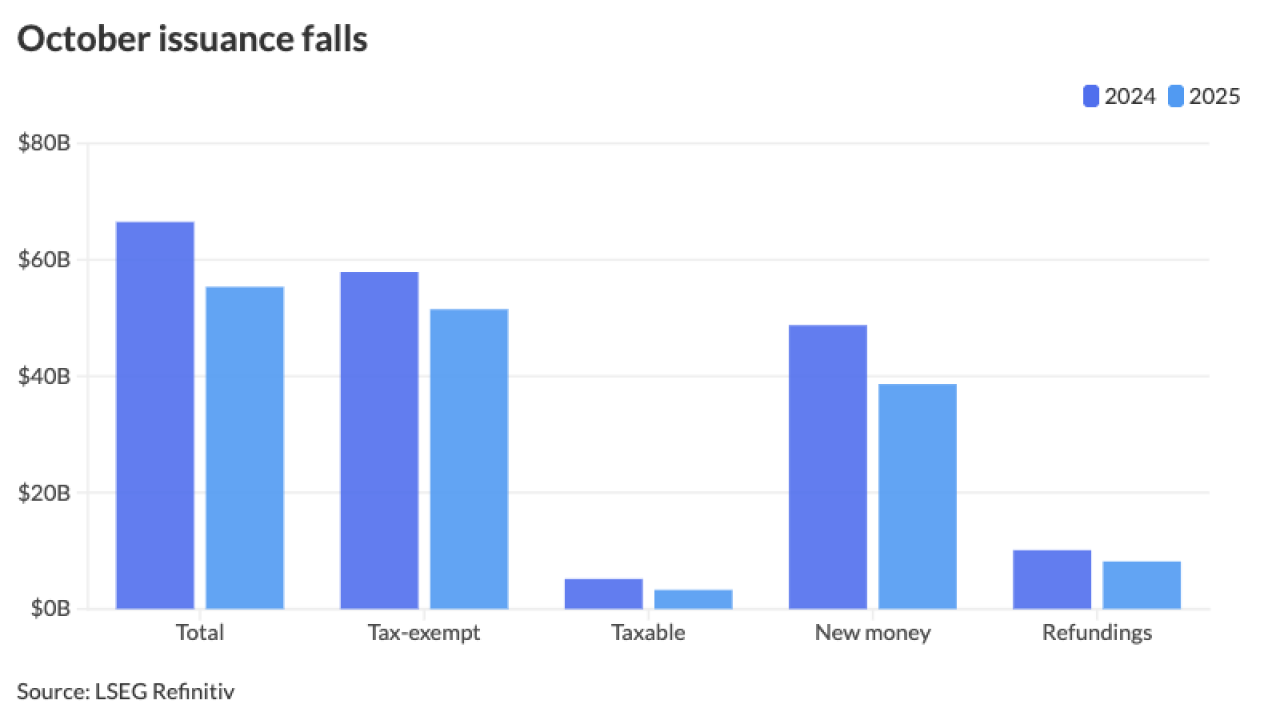Standard & Poor’s yesterday changed its outlook on CIFG NA’s financial guaranty subsidiaries to negative from stable, citing concerns with corporate governance, leadership succession plans, and support from CIFG’s parent company, Natixis SA. The outlook change affects CIFG Guaranty, CIFG Europe, and CIFG Assurance North America Inc., one of the municipal market’s triple-A rated bond insurers. The rating agency affirmed its AAA rating on the CIFG companies for the time being. (Click here for CIFA's AAA Rating from S&P.)CIFG is rated Aaa by Moody’s Investors Service and AAA by Fitch Ratings. “While CIFG benefits operationally from a strong capital position and conservative underwriting strategy, concerns have arisen over the effectiveness and processes of the company’s board, appropriate succession planning, and the degree of long-term support to be provided by its parent Natixis SA, all contributing to the outlook revision,” according to a report issued yesterday by Standard & Poor’s. The rating agency said CIFG’s supervisory board of directors has little experience in the financial guaranty industry. They provide weaker oversight than the boards of CIFG’s triple-A guarantor competitors, according to the report. “The negative outlook also reflects concerns relating to CIFG’s below-average earnings and [return on equity],” the report said. CIFG management only recently found out that Standard & Poor’s would place the company’s outlook to negative, according to chief financial officer Jim O’Keefe. He said new board members will likely be added soon to assure rating analyts of the financial guaranty knowledge of the company’s supervisors. “We agree with [Standard & Poor’s] that, with our continuing development, CIFG can benefit from certain improvements in corporate governance and succession planning, and we will significantly accelerate the plans we had underway to address these issues,” the company said in a statement released yesterday afternoon. Anthony Orsatelli, chairman of CIFG’s supervisory board, said in the statement that Natixis is committed to maintaining CIFG’s triple-A ratings. The company’s management will hold a conference call this morning at 10 a.m. for interested parties.Standard & Poor’s director David Veno, who wrote the report, said in an interview that CIFG is still a “strong company” and that it has maintained good practices of underwriting low-risk credits. The recent hire of industry veteran John Pizzarelli, the new head of CIFG’s U.S. public finance practice, factored into Standard & Poor’s decision to maintain their AAA rating on the company, Veno said. But Veno added that the rating agency has conducted a thorough evaluation of CIFG this year and has given the company time to work through these issues. “If the company does not prove successful in addressing these concerns, the rating will be lowered,” the report said. Paul Rosenstiel, deputy treasurer in the California Treasurer’s Office, said the negative outlook will not necessarily make the state less likely to use CIFG as an insurer as it prepares to issue tens of billions of new general obligation bonds in the next several years. The state typically relies on its underwriters and financial advisers to decide whether using bond insurance on any given deal is a good economic decision and on which insurer to use, Rosenstiel said. California consistently is a larger source of state and local bond sales than any other state, according to Thomson Financial. CIFG announced in September that it had gotten its license to operate in the Golden State and then opened an office in San Francisco in April. CIFG received a New York license in May 2002. As of December 31, 2006, CIFG had 48 state licenses, including California, Florida, Illinois, Massachusetts, Michigan, New Jersey, Pennsylvania, Texas and Washington. In 2006, CIFG insured 442 municipal bond issues totaling $6.949 billion in par value, ranking it sixth among bond insurers, according to Thomson. The economics of using bond insurance partly depend on how much yield an issuer can save on a deal if it buys insurance. Market statistics show that yields on bonds backed by the larger, older bond insurance companies typically trade at slightly lower yields than those backed by CIFG and other newer guarantors. The spread between CIFG-backed bonds and those backed by its better-established competitors has been narrowing during recent quarters, but the negative outlook from Standard & Poor’s could reverse this trend, said Matt Fabian, senior municipal analyst at Municipal Market Advisers. The fact that Standard & Poor’s concerns are specific to CIFG’s management, rather than its finances, likely means the outlook change would not negatively affect the market value of guarantys from other insurers, Fabian said. He added, though, that the news could widen spreads between credits backed by the four or five oldest insurers and the rest of the industry.“This could show that there is more credit and rating volatility than we would have been brought to believe,” Fabian said.





